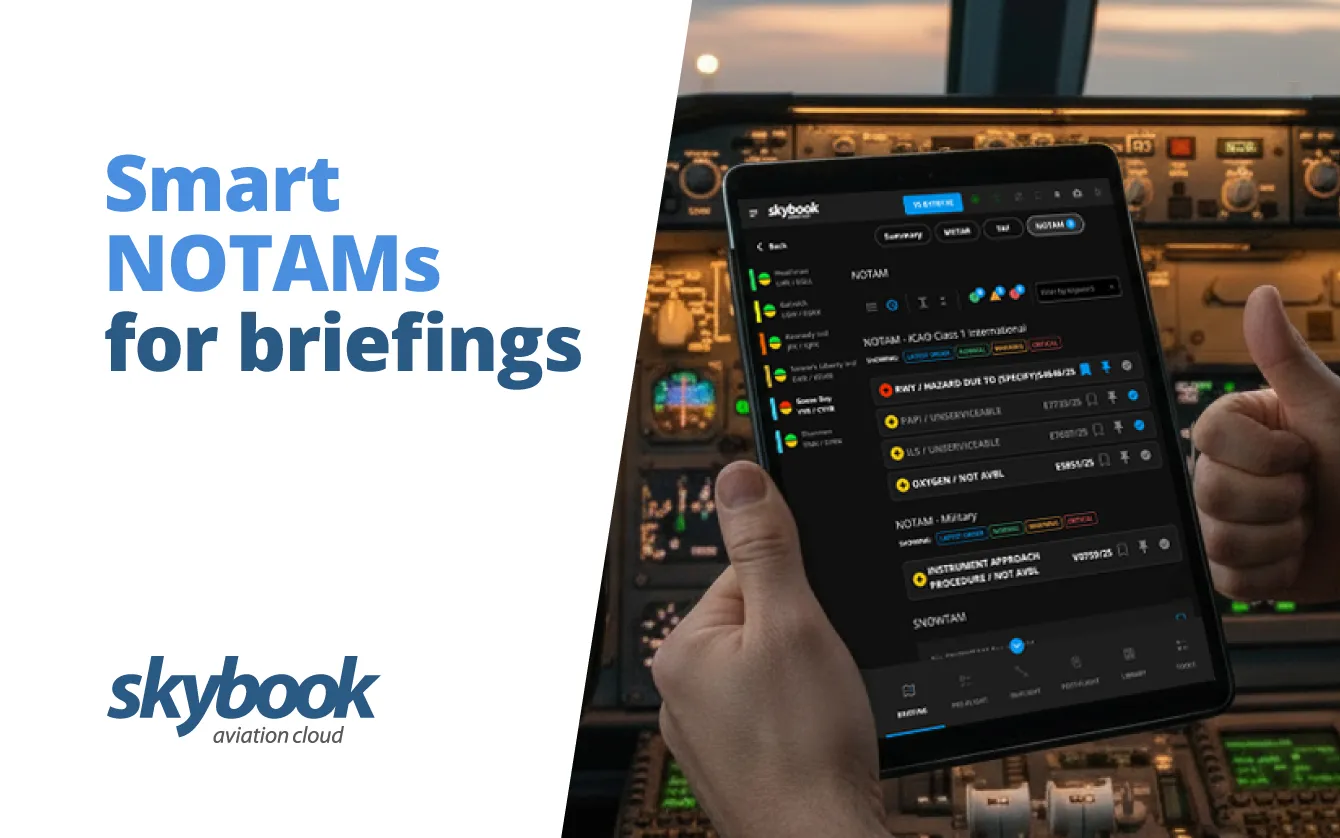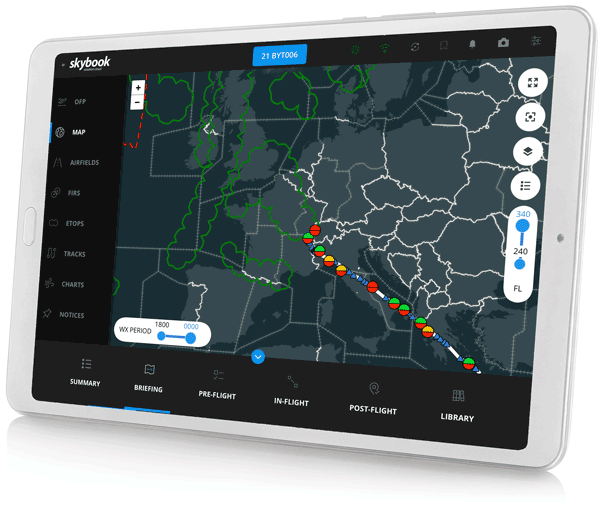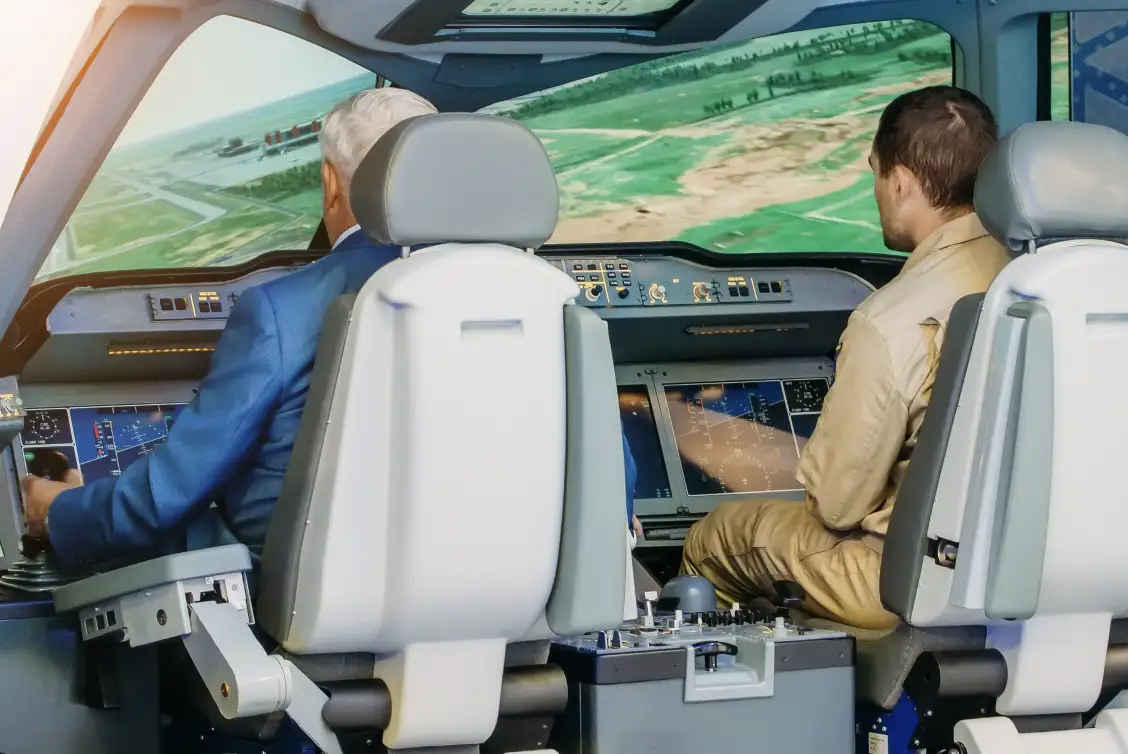
Smart NOTAMs for flight crew briefings
Updates 18th July 2025
Aviation situational awareness is a fundamental skill for pilots and aviation professionals, the ability to envision and anticipate critical elements during the flight phases.
Let’s delve into aspects of situational awareness in aviation, exploring its meaning, components, real-life examples, and the methods to enhance this vital skill for providing safe and efficient flight operations.
Situational awareness in aviation refers to all relevant factors affecting a flight operation, ranging from the aircraft's physical state to the surrounding airspace, weather conditions, air traffic, and crew communication.
The process involves perceiving, processing, and comprehending information promptly and accurately. The three primary stages of situational awareness are:
Perception
This involves pilots continuously scanning their environment, utilizing visual cues, instrument readings, and auditory inputs to gather relevant information.
Comprehension
The collected information needs to be interpreted correctly, understanding how different elements interact and impact the flight operation.
Projection
Having a complete understanding of the situation, pilots can anticipate potential future developments and prepare proactive actions.
Situational awareness serves as a fundamental safety element in preventing accidents in aviation. Pilots can respond to challenges and hazards, by staying aware of their surroundings.
For example, a sudden change in weather conditions or a nearby aircraft can mean pilots adjust their flight path, altitude, or speed, avoiding potential collisions.
Real-life accidents where a lack of situational awareness played a role, highlight its importance during all stages of flight; such as the tragic crash of Eastern Airlines Flight 401 in 1972. The flight crew became engrossed in diagnosing a malfunctioning landing gear light that they overlooked the aircraft's altitude, which led to a fatal impact with the Everglades.
Situational awareness also significantly enhances efficiency within flight operations.
By maintaining a clear understanding of the airspace and traffic conditions, pilots can optimize flight paths, reducing fuel consumption and operational costs.
Additionally, situational awareness allows for smoother and more precise communication with air traffic controllers, ensuring streamlined operations in congested airspace.
Electronic Flight Bags can significantly contribute to improving situational awareness for pilots and aviation professionals.
EFBs provide central access to essential information such as charts, real-time weather and NOTAM data; empowering pilots to make informed decisions and respond proactively to challenges. Here’s an article about EFB applications.

The aviation environment presents many challenges that can disrupt situational awareness, such as:
Information overload
The modern cockpit is full of advanced technology and data. If not managed effectively, can overwhelm pilots and hinder their ability to focus on critical information.
Automation dependency
While automation can provide efficiency to a pilot such as NOTAM filtering, over-reliance on automated systems may diminish pilots' situational awareness, leading to skill degradation.
Fatigue and stress
Long flights, changing time zones, and high-stress situations can impact a pilot's ability to maintain sharp situational awareness.
Distractions
In-flight distractions, such as cabin crew announcements or passenger requests, can divert a pilot's attention from the most critical tasks.
Aviation training providers must place a strong emphasis on situational awareness within their curriculum, ensuring that pilots develop and maintain this skill throughout all flight phases as part of their Airline Pilot Standards (APS) training.
Scenario based training
Scenario based training exposes pilots to realistic situations, allowing them to practice decision making under pressure and enhance their ability to assess complex situations accurately.
Simulator based practice
Provides pilots with realistic, hands-on experience in a controlled environment, allowing them to develop and refine decision making, communication and situational awareness skills during various flight scenarios; including emergencies, without real-world risk.
Automation Management
Pilots should receive training on effectively managing automated systems, striking the right balance between reliance and manual intervention.
Crew Resource Management (CRM)
CRM training promotes effective communication and teamwork among the flight crew, fostering a shared understanding of the flight situation.
Single-Pilot Resource Management (SRM)
SRM Focuses on how a pilot CAN effectively manage all available resources, both on board and from external sources like ATC or dispatch, if flying alone. It emphasizes situational awareness, workload management and risk assessment to ensure safe and efficient single-pilot operations.
Frequent Evaluation
Regular assessments of pilots' situational awareness skills, along with feedback and debriefing sessions, help identify areas for improvement.

Technology plays an essential role in enhancing situational awareness in the aviation industry. Such as terrain awareness and warning systems (TAWS), traffic collision avoidance systems (TCAS), enhanced weather radar; providing pilots with real-time information critical to flight safety.
Flight dispatchers also act as a vital support system for pilots, by providing Flight Watch duties. Throughout the flight, they use software to continuously monitor the progress of the aircraft and maintain communication with the flight crew, especially in the event of unexpected incidents or emergencies.
Dispatchers provide timely and relevant information to assist pilots in making critical decisions, such as finding suitable diversion airports or coordinating with air traffic control for priority handling.
Recent advances in tech
Final thoughts
For safe and efficient flights, aviation situational awareness is an imperative skill for pilots to manage and hone continuously.
By fully embracing situational awareness, the aviation industry can ensure safer skies, reducing the likelihood of accidents and incidents while maximizing the potential for efficient flight operations.
Learn about how the skybook aviation cloud can help assist situational awareness for dispatchers, pilots and within flight operations.